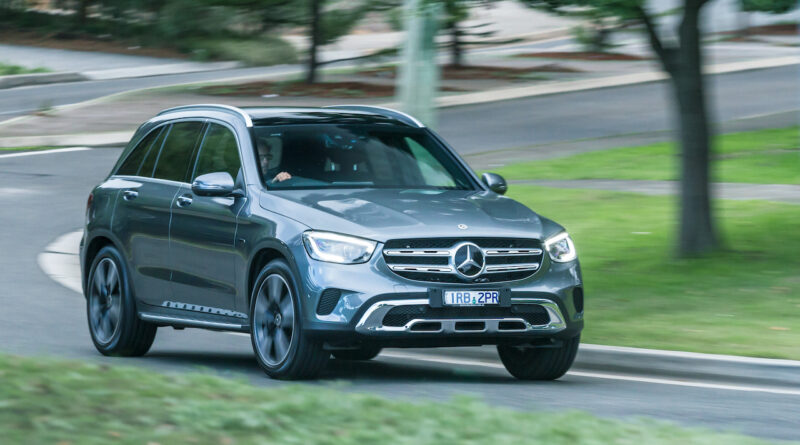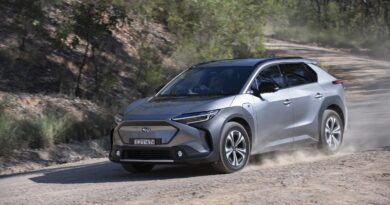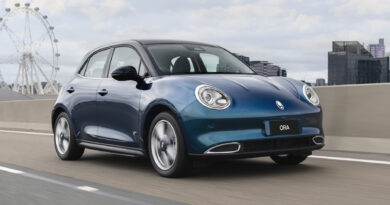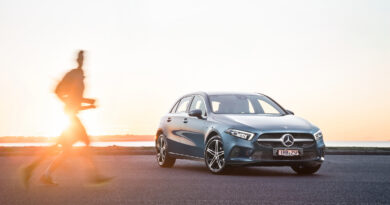2021 Mercedes-Benz GLC 300e review
In its own small way the Mercedes-Benz GLC 300e is a symbol of our changing automotive landscape. A relatively new member of the popular mid-size SUV range, it is a plug-in petrol-electric hybrid (PHEV) that essentially replaces diesel in the line-up.
Value: Mercedes-Benz GLC 300e
Priced at $90,200 plus on-road costs, there is no doubt the Mercedes-Benz GLC 300e is a fair chunk of change.
That makes it $8700 more expensive than the orthodox GLC 300, which is more than double the $3555 difference when the 300e first went on-sale. Back then the argument to spend the extra was pretty compelling. Each price hike for the 300e dilutes that.
Both versions of the 300 come with a 2.0-litre four-cylinder turbo-petrol engine mated to a nine-speed automatic transmission and 4Matic all-wheel drive. But the 300e adds the PHEV drivetrain, as well as air suspension and pre-entry climate control.
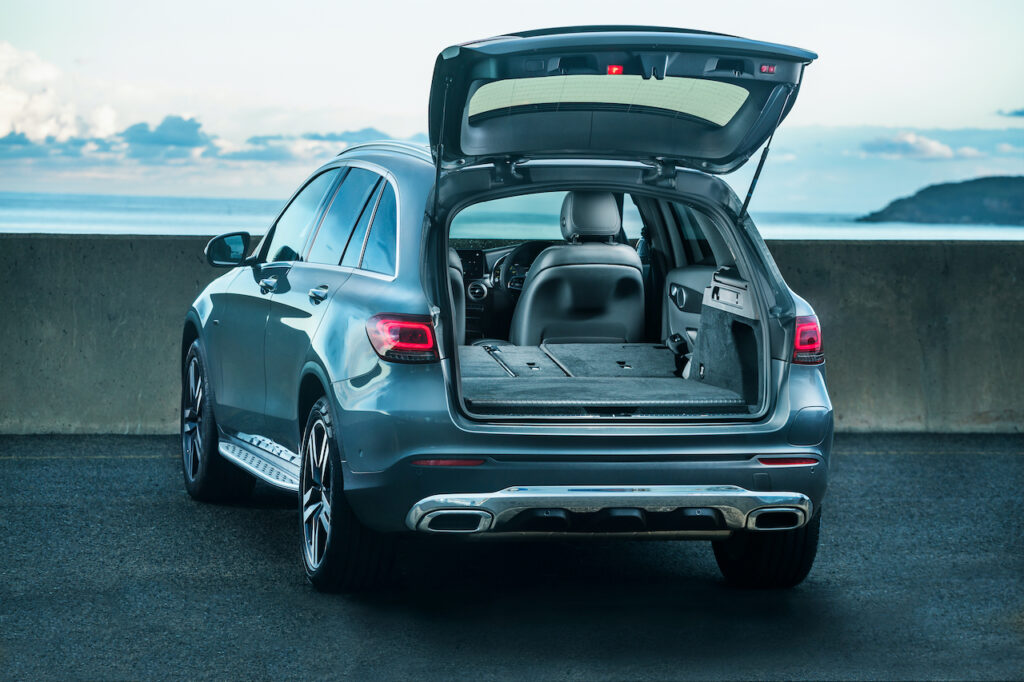
Standard equipment shared by both models includes Artico leather upholstery, dual climate-control, ambient interior lighting, wireless charging, Apple CarPlay and Android Auto, parking assist, a sophisticated level of infotainment provided via a 10.25-inch dashboard-mounted touchscreen that includes the MBUX ‘hey Mercedes’ system.
Inside the Mercedes-Benz GLC 300e
A five-seat SUV that measures up at 4658mm long and 1890mm wide, the Mercedes-Benz GLC 300e has a really well-presented, spacious and sensible cabin with lots of kit and plenty of storage opportunities – remembering the gearshift lever is moved to the steering column creating more space in the centre console.
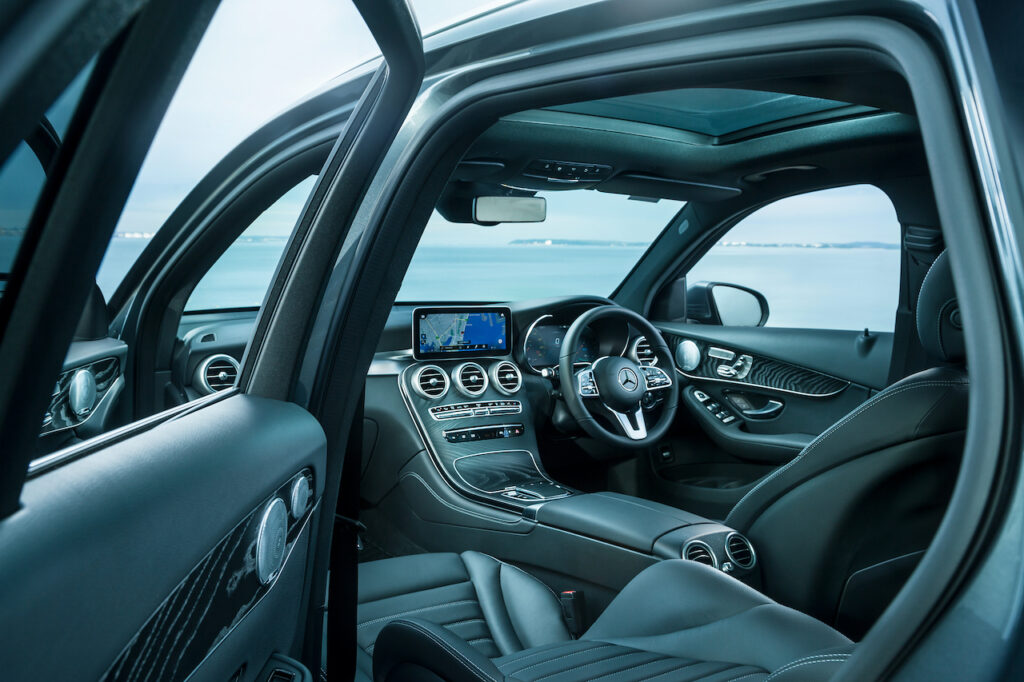
However, the battery pack under the boot floor reduces luggage space from 550 to 395 litres and the petrol tank from 66 to 50 litres. And courtesy of adding the electrified powertrain kerb weight is even heavier than the berserk Mercedes-AMG GLC 63 S at 2030kg.
Performance and efficiency
The 300e’s 2.0-litre turbo-petrol four-cylinder engine makes 155kW and 350Nm on 95 RON fuel. That’s actually a bit less than the 190kW/370Nm version in the 300. But once the 90kW/440Nm e-motor is added, the combined output steps up to 235kW and 700Nm.
Drive is sent to the road via a nine-speed automatic transmission, mechanical 4Matic all-wheel drive, 20-inch alloy wheels and – on our test car at least – 255/40 Pirelli Scorpion Verde run-flat rubber.
Officially, the 300e has a combined fuel consumption rate of just 2.6L/100km. Obviously, this is pretty theoretical as the consumption rate is zero when the electric motor is doing the work. It’s more like 7.0L/100km when the 300e is operating as a hybrid.
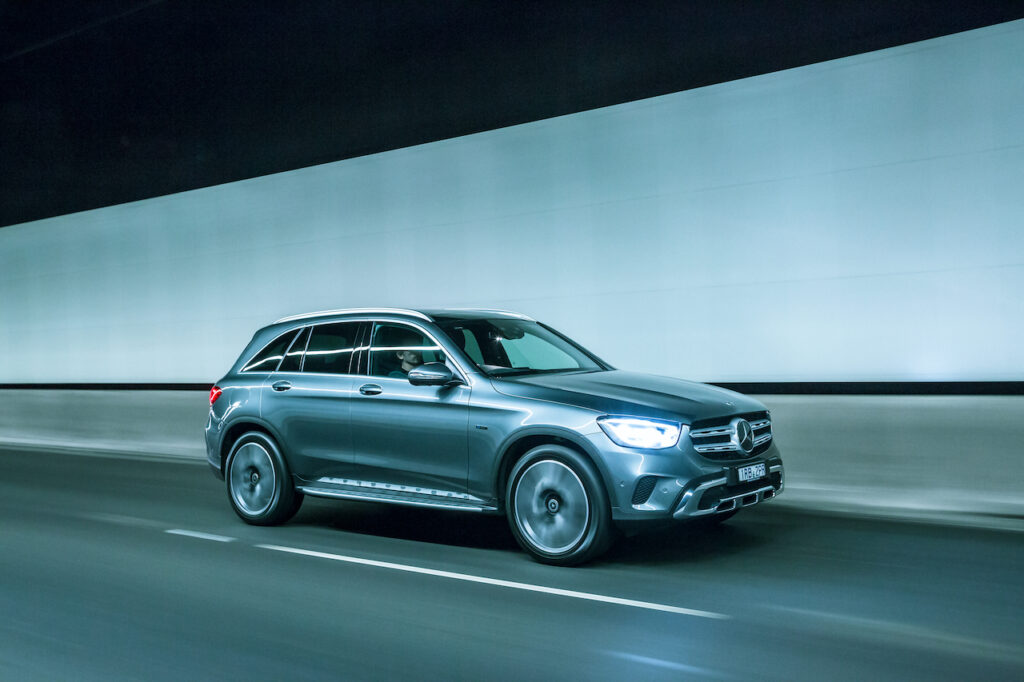
In isolation the ICE drivetrain is a refined and zesty performer. The same can be said when running on electricity alone. It’s quiet and that low-down pulling power is always Mix the two powertrains and you get even sharper response. Benz claims a 5.7 0-100km/h time, 0.5 sec faster than the 300 and only bettered by the GLC 43 (4.9) and 63 (3.8).
Sadly, the electric urge doesn’t actually last that long. Officially claimed at 43km WLTP, we managed low 40km a couple of times. But we also fell well short of that if the seat heater and climate-control were getting a work out and the throttle was being applied with some vigour.
PHEVs – including the upcoming Mercedes-Benz S580e PHEV – are now coming to market with 70-80km and even 100km ranges, so the 300e definitely needs an upgrade in this area.
Charging the GLC 300e
Of course, the 300e is limited in its electric range because the lithium-ion battery tucked under the boot floor only has a 13.5kWh capacity.

When the battery is exhausted it takes seven hours to recharge via a power socket; there’s only the slower AC charging, no DC. You can cut that to two hours using a Type 2 plug and optional wallbox or AC public charging station.
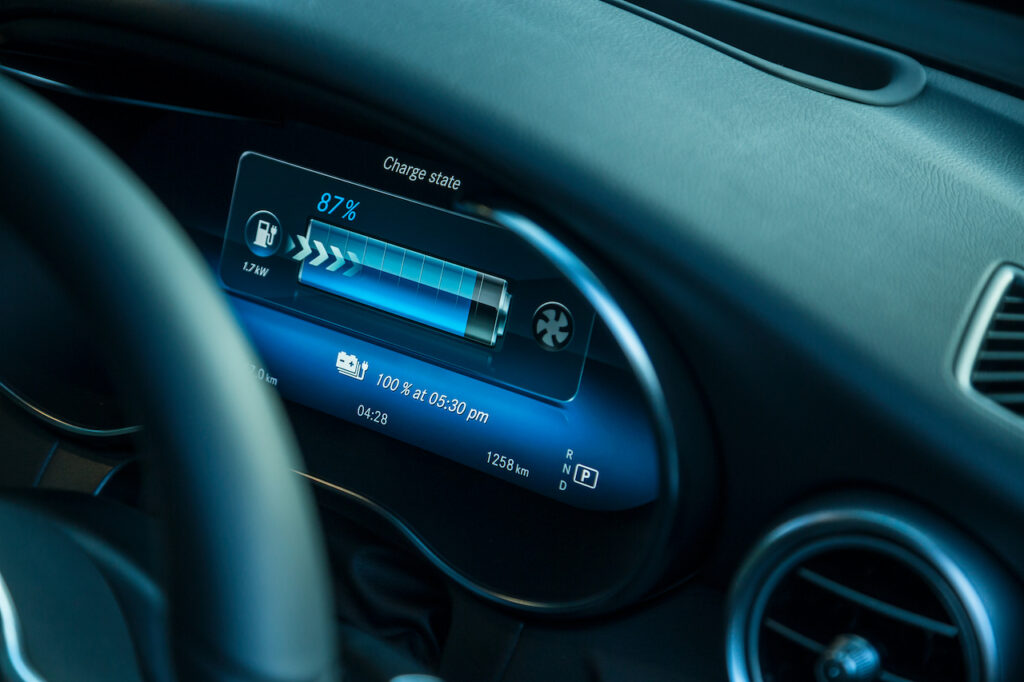
Ride and handling
The GLC 300e is a really flexible and appealing drive. It can lope along at a relaxed suburban gait, or respond at a more urgent rate.
The 300e’s multi-link air suspension is intrinsic to this versatility. It is able to shift from comfortable relaxed to sportingly firm at the press of the ‘Dynamic Select’ mode button.
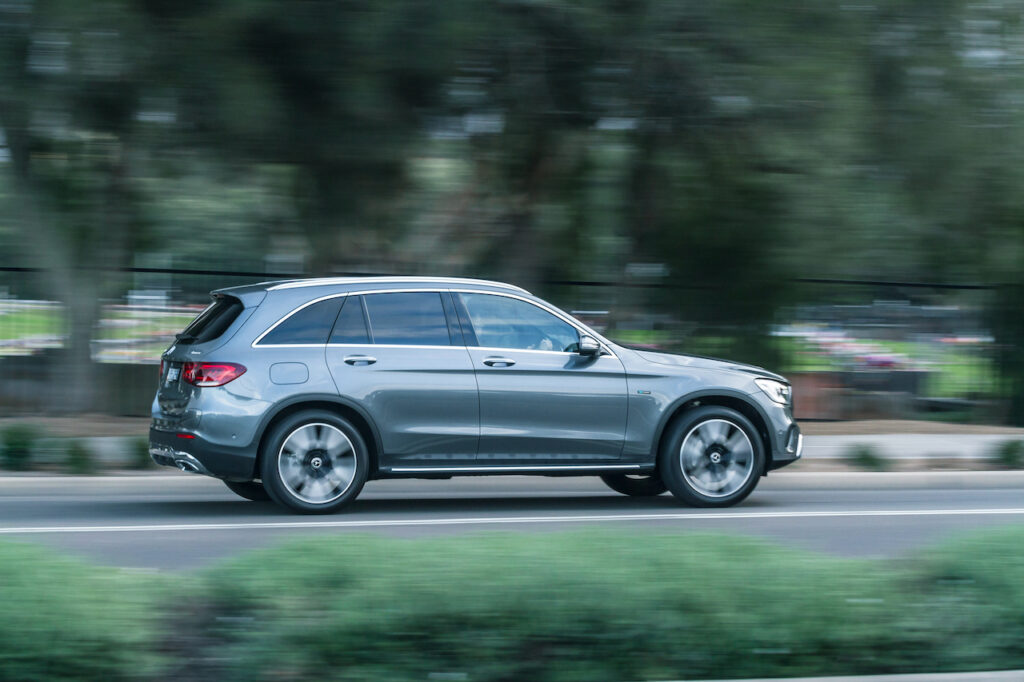
As is common with PHEVs, the weakest drive element is brake feel. Performance is actually strong, but the regenerative function delivers a wooden response typical of electrified vehicles.
Safety
Standard Mercedes-Benz GLC 300e safety equipment includes autonomous emergency braking and nine airbags.
There’s a sophisticated set of driver assist systems that provide hands-free semi-autonomous capability for shorts bursts before the car objects. There’s also adaptive cruise control, although the route-based speed adaptation is curtailed in Australia by a lack of mapping data to the required standard.
‘Eco-Assist’ sometimes still uses the 300e’s camera and radar to judge when the car should react to moving objects or when it can recuperate energy, but does not display driving recommendation pictograms in the dash such as ‘foot off the accelerator’ that are available in other markets.
Excellent multi-beam LED headlights are a boon at night and a definite safety advantage.
Verdict
Mercedes-Benz GLC 300e: The verdict
When it launched last year with only a small price impost over the standard GLC 300, the 300e plug-in hybrid electric vehicle was the logical choice among the two to buy.

But with the price moving upwards, negatives such as the short electric range and compromised boot space become more significant.
But it you want a taste of electrified motoring without abandoning the ICE age altogether then the GLC 300e’s luxury and driving manners still provide plenty to like.
Mercedes-Benz GLC 300e specifications
Price: $86,300 (plus on-road costs)
Basics: PHEV, 5 seats, 5 doors, mid-sized SUV, AWD
EV range: 43km
Battery capacity: 13.5kWh
Battery warranty: Six years and 100,000km
Energy consumption: 17.8kWh/100 km
Petrol engine: 155kW/350Nm 2.0-litre 4-cylinder turbo
Motor: single front motor, 90kW/440Nm
AC charging: 6.6kW, Type 2
DC charging: NA
0-100km/h: 5.7 seconds (claimed)

